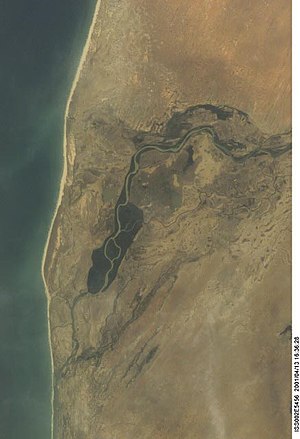Agriculture in Mauritania
The vast majority of the population lived in the southern one-third of the country, where rainfall levels were high enough to sustain cattle herding.
In the dry northern two-thirds of the country, herding was limited to widely scattered pastoral groups that raised camels, sheep, and goats, and farming was restricted to date palms and minuscule plots around oases.
These events have forced shifts in patterns of movement, herd composition and ownership, and increased pressures on lands also occupied by sedentary farmers in the south.
The drought also caused shifts in the herding of camels (traditionally located in the drier north) and of sheep and goats (held by groups all across Mauritania).
The larger zebu stayed closer to the better watered riverine areas and were owned by sedentary groups who practiced agriculture in addition to livestock raising.
Overgrazing in increasingly crowded areas and the cutting of trees and shrubs for firewood and fodder (particularly for sheep and goats) contributed to accelerating desertification and posed a threat to crop production.
Herders began to take advantage of access to public wells to graze herds in areas traditionally controlled by tribal groups.
The ministry's National Livestock Department (Direction Nationale d'Elevage - DNE) was responsible for field services and for the annual rinderpest vaccination campaign.
In the late 1980s, arable land was scarce, and, except for some oases, crop production was limited to a narrow band along the southern borders with Senegal and Mali.
[3] Dieri cultivation occurred during the rainy season, from June–July to September–October, in areas receiving sufficient precipitation (400 to 450 millimeters annually) to grow millet and peas.
Oualo plantings occurred during the cold dry season from November to March, to take advantage of ground moisture as the flood waters of the Senegal and Gorgol rivers receded.
It depended primarily on dams to retain water from the annual rise on the rivers resulting from rains falling upriver.
The cereal deficits have been filled through a combination of commercial imports and international food aid, of which the United States has been the principal donor.
Rising population in the interim meant that, despite this significant recovery, the country remained dependent on imported grains to satisfy its needs.
The remainder were small-scale operations (less than fifty hectares), developed by a newly active private sector centered mainly in Rosso.
There were also plans involving Mauritania, Mali, and Senegal to integrate rural development and water and flood control through the Senegal River Development Office (Organisation pour la Mise en Valeur du Fleuve Sénégal—OMVS) as the massive Diama and Manantali Dams became fully operational (see Relations with Other African States, ch.
Factors contributing to this transition included government abolition of centuries-old slavery practices involving tribal and ethnic relations between various herding and sedentary communities, including adwaba; government development policies, particularly with regard to land reform and large-scale irrigation schemes; and tremendous shifts in land settlement and herding patterns because of drought.
Landownership might be vested in the clan or village chief as representative of the group and land distributed in perpetuity to family units having usufruct.
Also unknown was the impact of the government's stated policy of giving priority to former slave groups when lands that might be claimed under eminent domain were redistributed.
According to the act, the government could grant title for parcels of undeveloped land—which apparently included fallow land—to whoever pledged to improve it and at the same time possessed requisite resources.
Although the economic necessity of the act was beyond question, the social costs of appropriating valuable Senegal River Basin land hypothetically controlled by blacks and redistributing it to wealthy Maures from farther north could prove unacceptable.
Large-scale government irrigation projects and plans for integrated development based on regional water management created another set of variables for traditional patterns of land use and ownership.
The company held a monopoly on the imports of basic commodities (principally rice, tea, sugar, and tomato paste), which it resold to private interests for the retail trade.


